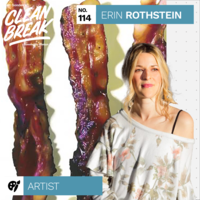The timeline when
prepping for a show
- by Always Art Staff

Whether you have a show coming up that you have already secured or you are in the process of applying to or organizing shows to gain exposure, you will need to keep an organized calendar to ensure you get everything done in time. You want to avoid procrastinating or waiting until the last minute to hit deadlines, as it will result in you compromising the quality of your work, artist statement, framing, etc., which will reflect negatively on you as an artist and as a professional.
Set your goals
Before you start preparing for a show, define what you want to achieve. Various types of exhibitions have different purposes, and the work you choose to show can also serve different goals. Is your objective to sell your artwork, simply gain exposure, or meet other artists?
When you know what you are aiming for, you can more accurately select which work to show, which shows to spend the most time on, and which exhibition opportunities to apply for. If your objective is to sell work, you will want to avoid shows that are just for exposure or just for fun. If you want to meet other artists, you should prioritize joining group shows where you will make connections and grow protentional collaborations. Clarify these priorities as you seek opportunities to keep yourself aiming for the right end goal.

Choose your artwork
You will need to be careful and intentional when it comes to selecting which piece to exhibit. Understand the show’s theme, the audience, the venue, and the other artists you may be showing alongside. For some exhibitions, you will be chosen based on a specific work. In contrast, for others, you will be selected because of your body of work and then be given the opportunity to create a new piece in response to a theme or choose one of your works that fits a given theme.
Whatever the arrangement is, be sure you are showing a piece that represents your core style and capabilities, so you make the most of the opportunity to get your work seen by a wide audience and get your name out there.

Prepare your artwork
Once you have selected your artwork, you will need to get it ready to be displayed. For painting, prints, drawing, or photography, this may mean getting it mounted, framed, or printed. The lead time for high-quality executions of these processes is precisely why you must not wait until the last minute to get organized.
The best quality framers and printers will not be able to complete your order overnight, so you need to give them plenty of time in advance to do the best job. You should aim to find a vendor that you love working with and can trust so that you can be confident in the quality of their work for all your needs in the future. If you do not already have one, ask around your network to see who others recommend as a referral.
Presenting your work in the best way will enhance the quality of the piece and its value. A bad mounting job or cheap printing will negatively reflect on your work and your career.
Promote the show
Even if you are not the one organizing or hosting the show, you need to promote it on your social media accounts so everyone in your network is aware of the opening and event. Post about it several weeks in advance; don’t wait until the day of. You may want to also send out an email announcement to your relevant contacts. Consider notifying your network several weeks in advance and then again on the week of or the day before the opening.
Repost any content that the organizer publishes about the show to keep reminders active in your social media feed and directly tell your friends and most important contacts, offering a personal invite to increase the chance that they will attend.

Prepare your bio and artist statement
Many artists leave this step until the last minute, although it takes time to craft a good written bio and statement, so you should be working on it in advance. You may already have copies of these written, in which case you can use your finalized version, but if not, you will need to create one.
Having a finished version of each document will help you in the future, as you will be repeatedly asked to submit these. You may need to make updates or adjustments each time, but the core of the document can remain the same for a period of time.
Your bio should describe your professional background, previous exhibitions, awards, residencies, achievements, and any education you have received.
Your artist statement will discuss your practice and work, including the medium you use, the topics you make art about, your interests that drive your artwork, and sources of inspiration.
Get a colleague to proofread your documents before you submit them to ensure grammatical accuracy.
Host the show
Make sure to attend the opening of your show and talk to attendees about your artwork. It’s an excellent opportunity to expand your network of collectors, gallerists, and fellow artists. Be prepared to socialize and introduce yourself and take the opportunity to get out there. Exchange contact information with any new potential contacts that you’d like to keep in touch with in the future.
Follow up after the show
If any of your contacts attended the show, send a follow-up email thanking them for joining. If you meet any new connections and exchange contact info, send them a follow-up saying that it was nice to meet them and that you hope to keep in touch. This will help you establish a relationship and the opportunity to collaborate or invite them to future shows.

